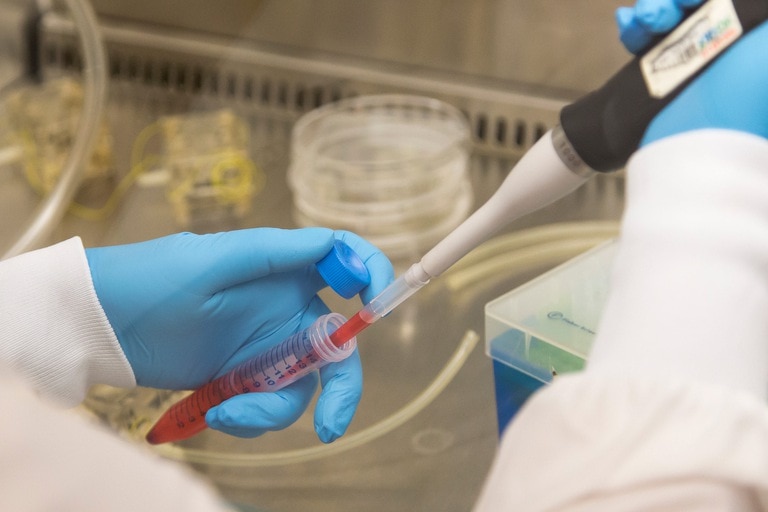
Cancer is smarter than you think: Q&A with Geeta Mehta
Decoding the sophisticated inner workings of cancer may help us fight it.

Decoding the sophisticated inner workings of cancer may help us fight it.
Geeta Mehta recently published a paper detailing integrated cancer tissue engineering models, which study cancer not simply as masses of cells but as structured organs with multiple cell types that communicate with each other and interact with the body—much like your lungs or liver.
Mehta is the Dow Corning Assistant Professor of Materials Science and Engineering, an assistant professor of both materials science and engineering and biomedical engineering, and head of the Michigan Engineering Engineered Cellular Microenvironments Lab. We sat down with her recently to learn more about her work.
No. All types of cancer should be viewed and studied as “cancer organs” including solid tumors, leukemia and lymphoma. But, just like actual organs, each type of cancer organ works differently.
Cancer organs and normal organs both have complex internal environments and a series of complex interactions that govern their behavior. Both are composed of many cell types that communicate dynamically with each other, and both have a specific three-dimensional structure that influences how they interact with the rest of the body.
One big difference is that actual organs are tightly regulated to maintain their integrity and stability. Cancer is not regulated this way—the environment inside a tumor promotes uncontrolled growth rather than stability.
Because the organ-like traits of cancer influence its response to treatment. Traditional cancer research mainly involves 2D slides and petri dishes that fail to recognize and incorporate these traits. These 2D cultures don’t respond to treatments the same way as cancer inside the body, and that makes them less useful.
By viewing cancer as an organ, we can develop more realistic bioengineered models that replicate the conditions inside the body, including three-dimensionality, heterogeneous cell populations, and mechanical stimuli—reactions from physical forces the cells experience by virtue of being in the body. By taking these features into account, we can obtain more clinically relevant results, steer development of new therapeutics and accelerate clinical progress.
By designing cancer organ models, we hope to better understand how cancers progress and to understand the specific interactions that turn healthy cells into cancer. Then, we hope to develop targeted therapies that interrupt those interactions. This approach can also improve development of therapies that are tailored to individual patients.
We’re finding that not only does cancer work like an organ, but that the same type of cancer organ works differently in different patients. So we’re developing three dimensional heterogeneous models that can recreate tumors from individual patient samples.
This enables us to look at differences between individual microtumors from a single patient, and at the differences in cell composition, gene expression and chemoresistance that occur from patient to patient.
The paper is titled, “Integrated Cancer Tissue Engineering Models for Precision Medicine.” It is published in the May 10, 2019 issue of PLOS ONE.
Credits & Links: